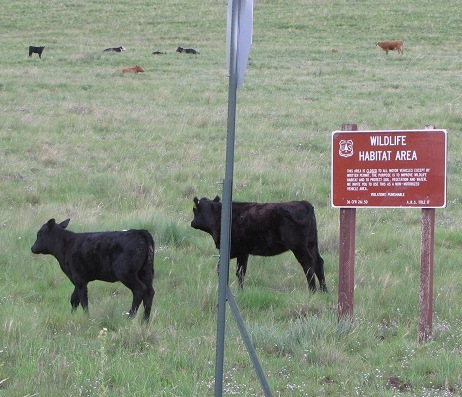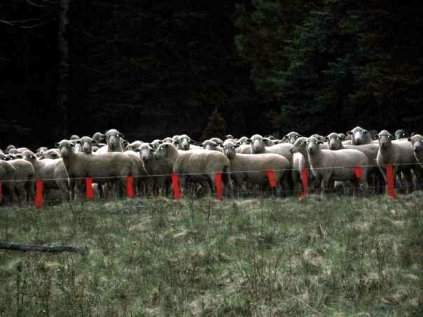In the News: We didn’t have to kill the Wedge Wolf Pack
Note from mexicanwolves.org: This excellent Op-ed focuses on Northern Rocky Mountain gray wolves whose Endangered Species Act Protections were stripped away. Mexican gray wolves number only around 60 in the wild, and are still protected under the Endangered Species Act, but their “experimental, non-essential” designation means that federal wildlife managers can and often have killed or removed them over livestock losses. We saw this recently with the Fox Mountain pack alpha female; the Fish and Wildlife Service planned to kill this Mexican gray wolf mother of four pups and, after tremendous public outcry, instead tore her from her family and placed her in permanent captivity. The points the Op-ed’s author makes about how conflicts should instead be addressed are applicable to all wolves.
***************************************************************************************************************************************
AS a wildlife scientist involved in endangered species recovery and a student of the interactions between humans and animals that many despise, I have closely tracked the recent removal of the Wedge wolf pack from Northeast Washington. As citizens and agencies proffer explanations, there has been little rationale retrospection. I offer one in the hopes of changing how future human-wolf conflicts will be resolved.
The removal of the Wedge pack was an avoidable response to disingenuous ranchers who took advantage of the unwillingness of conservation agencies and advocacy groups to spend political capital. Len McIrvin, owner of the ranch where wolves had killed cattle, refused to implement the many successful predator deterrents used by his fellow ranchers, for example, range riders, guard dogs, electric corrals and electrified flags, also known as turbo flaggery.
Conservation agencies rightfully offer financial incentives to those who willingly use deterrents, but they do not penalize those who choose not to. This is reasonable for a rancher grazing on private land, but when public resources are used — as in the case of McIrvin’s cattle grazing in the Colville National Forest — then consequences should be stipulated and penalties should be levied.
By spending heavily to satisfy a single citizen, our agencies squandered public funds, devalued the sacrifices made by the many well-behaving ranchers who take proper precautions to limit wolf-cattle interaction from the outset, and disregarded the majority of U.S. and Washington citizens who support wolves and the economic windfall for hunters and wildlife viewers alike. Conservation-advocacy groups have publicly condoned the use of lethal force and now are stinging from its application.
In hindsight they call for stronger proactive measures, but their early willingness to back a strategy that assumed killing wolves was necessary to their survival has set back wolf recovery and allowed members to shirk their responsibility as a voice for nature, first.
What can we do now to avoid future pack removals? Broadening ownership of our wolves and their interaction with our neighbors is an important start.
The state could help by creating a wolf license plate or an annual “wolf stamp” that would allow all Washingtonians to bear the costs of sustaining wolves. Revenues could fund innovations that strengthen local economies dependent upon wolves. These might include rancher investments in herd safety or, for those wishing to diversify their income streams, startup costs for wolf tourism businesses.
Tailoring proven tactics such as mimicking the dolphin-safe tuna campaign to certify “wolf-safe beef” could aid ranchers who act responsibly by allowing consumers to reward their sacrifice. Local economies would grow as independent assessors certify herds that coexist with wolves, ranchers cooperate to develop marketing strategies, and local processors prepare and ship the meat to our urban marketplace. Beef that was raised in conflict with wolves would garner the rancher less at market.
If grazing fees were also linked to stewardship, it would cost more to produce. Federal agencies could hike grazing fees for ranchers who choose not to employ wolf deterrents.
As we learn to be better wolf neighbors, we should also teach wolves to be better human neighbors. Wolves are smart and living in a pack means they can learn from one another, but dead wolves don’t learn. Teaching wolves that cows and sheep taste bad is possible by tainting meat with sickening agents, a tactic proven effective at shifting the diets of other predators.
For centuries, we Westerners have waged war on our wild dogs, but we seem incapable of learning from our mistakes. Let us begin to learn.
Our ecosystems function poorly, our cultural identity narrows and our economy suffers when we refuse to tolerate wolves. Our future holds more conflicts with wildlife, but by learning to live with other forms of life, even those our ancestors reviled, we not only improve our ecosystem’s resilience, we show our uniqueness as a species.
John M. Marzluff is a professor of wildlife science at the University of Washington and author of Gifts of the Crow: How Perception, Emotion, and Thought Allow Smart Birds to Behave Like Humans, which addresses nonlethal animal control.
*************************************************************************************************************************************
This Op-ed appeared in the Seattle Times
 Take action: The Fox Mountain mother wolf was the first Mexican wolf removed because of livestock losses for several years, and a recent proposal to release new wolves states that any wolf implicated in “nuisance” behavior, including livestock conflicts, three or more times in one year will be killed or placed in permanent captivity. This is return to Standard Operating Procedure 13, which was rescinded in 2009. Prior to 2009, the Fish and Wildlife Service killed or removed 92 wolves from the wild population because of nuisance behavior or conflicts with livestock.
Take action: The Fox Mountain mother wolf was the first Mexican wolf removed because of livestock losses for several years, and a recent proposal to release new wolves states that any wolf implicated in “nuisance” behavior, including livestock conflicts, three or more times in one year will be killed or placed in permanent captivity. This is return to Standard Operating Procedure 13, which was rescinded in 2009. Prior to 2009, the Fish and Wildlife Service killed or removed 92 wolves from the wild population because of nuisance behavior or conflicts with livestock.
Please write to Fish and Wildlife Service Southwest Regional Director Benjamin Tuggle and copy Chris Bagnoli, Interagency Field Team Leader with the AZ Game and Fish Department, and tell them that killing and removing Mexican wolves because of livestock is unacceptable. Here are points about the recent proposal you can include:
1. While proposing to release a few new wolves into the wild after four years of no releases is a step in the right direction, the Mexican Wolf Blue Range Reintroduction Project Replacement Release Outline for Arizona 2013 is inadequate.
2. The resumption of killing and removing endangered Mexican wolves over livestock conflicts outlined in the Pack Management Plan is unacceptable. Policies like those described in the plan are one of the reasons the Mexican wolf population numbers and genetic health are still of such great concern.
3. The USFWS needs to do a better job of including the public in decisions like these; these documents were only released to a few people relative to the many who have expressed an interest in new releases over the past year. It is inappropriate to hand off the USFWS’s outreach responsibilities to the AZ Game and Fish Department and to fail to engage the public on these issues.
4. If the Mexican gray wolf is going to succeed, several critical steps must be implemented immediately:
- Develop, adopt, and implement an aggressive genetic rescue/re-rescue plan;
- Revise the Endangered Species Act Section 10(j) rule to authorize direct releases of captive-raised Mexican wolves to any geographic location within the designated BRWRA (currently new wolves can only be released into Arizona, which excludes excellent habitat in New Mexico);
- Restore decision authority to the USFWS for wolf release decisions (this release proposal came from the AZ Game and Fish Department, and is clearly written to accord with a directive from the Arizona Game and Fish Commission to accept releases only to replace wolves illegally killed in Arizona the previous year);
- Eliminate “presence of livestock” as a rationale for excluding areas from consideration for wolf releases (There are plenty of places to release wolves in the Blue Range Wolf Recovery Area, but many appear to be excluded simply because of active livestock grazing operations in the project area; proactive measures have been successfully used to avoid depredations and the recovery of Mexican gray wolves is the appropriate priority); and
- Resume and expedite recovery planning for the Mexican gray wolf (The recovery planning process for the Mexican wolf is currently stalled and significantly behind schedule. At this point, the release of a draft Recovery Plan is not expected until sometime in 2014. Mexican wolves need and deserve better performance by the USFWS).
Please add anything else you would like, and include your name and address with your comments.
Send your email to USFWS Southwest Regional Director Benjamin Tuggle and copy it to Chris Bagnoli, Interagency Field Team Leader with the AZ Game and Fish Department .
Thank you for taking the time to help pull the Mexican gray wolf back from the brink of extinction!
Click here to join our email list for news, action items, and updates.
Top photo courtesy of Jean Ossorio
Bottom photo of sheep with fladry courtesy of Defenders of Wildlife



